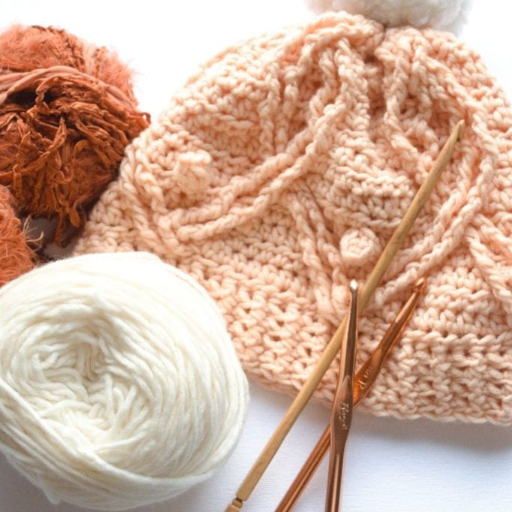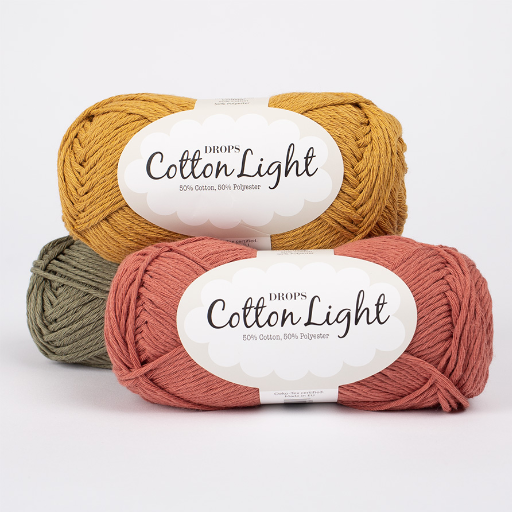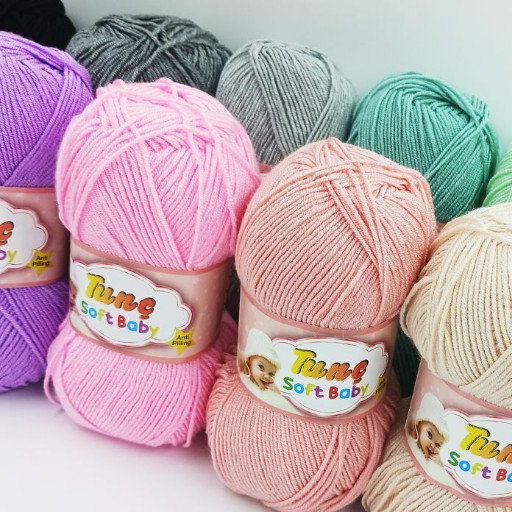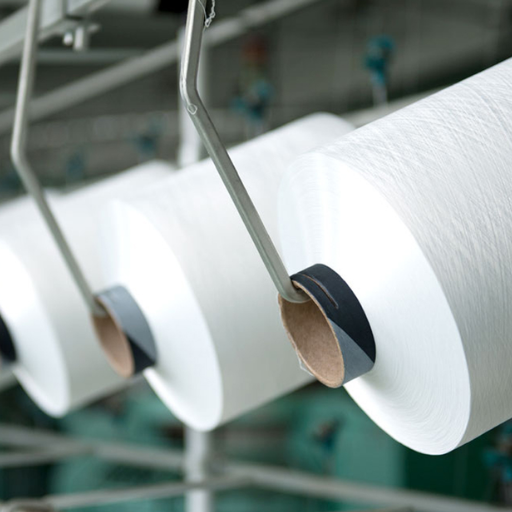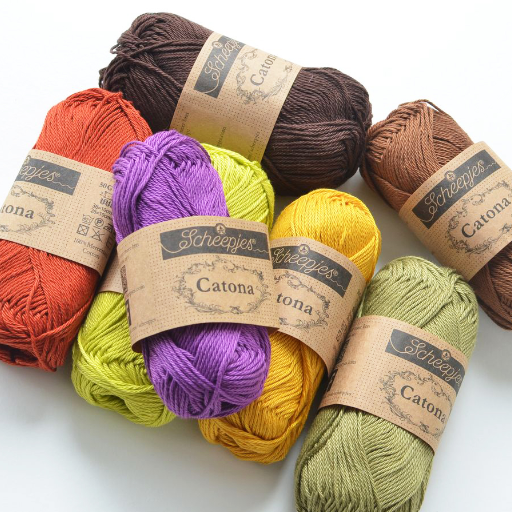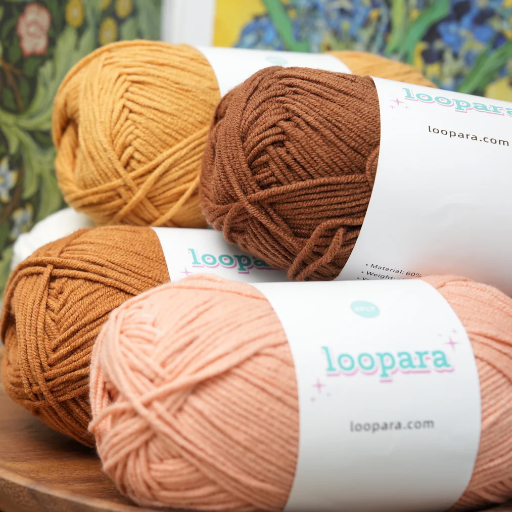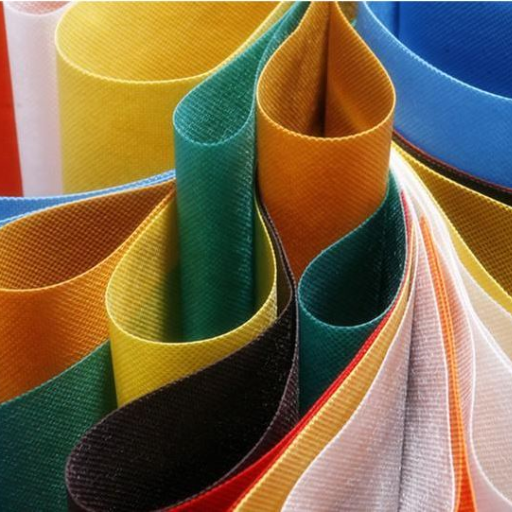Yarn that contains elastic features provides numerous possibilities for crochet and knitting, whether it’s creating intricate patterns or accessories that require a high level of precision. Fitting garments, accessible shape retention, and expressive textured patterns are some of the many things this material is great for. Its durability, flexibility, and overall functionality makes it stand apart from other materials readily available in the markets. With that said, it is very beneficial towards enhancing skill and creativity for any hobbyist. In the upcoming paragraphs, we will examine and evaluate the relative benefits, characteristics, and uses that elastic yarn offers for crocheting and knitting. Get ready to uncover how this approach to material can transform the perspectives and ideas for handmade crafts.
What is Elastic Yarn and How is it Used?
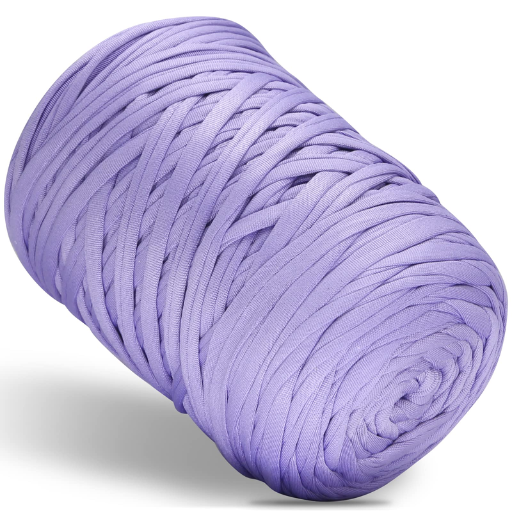
Elastic yarn integrates stretchy materials such as spandex or lycra on a base unit to form elastic yarn. It is mainly blended with cotton, wool or synthetic materials to ensure softness. Elastic retention is useful in the production of socks, fitted garments, and ribbed trims. It can be stretched wide and still maintain its original form, which is a plus in restoring shape. Numerous crafters use it as it provides class and elegance to the piece being knitted or crocheted, therefore, suitable for any skill level.
Understanding the Elastic Properties of Yarn
Elasticity is a structural characteristic of it’s fibers, raw materials as well as the procedures carried out through its production. Spandex, rubber, and elastane are specially made with high elasticity properties and can be blended with cotton or wool to form yarns. These fibers are capable of stretching to certain limits, and when tension is released they go back to its original form.
Properties such as percentage of elongation and recovery rate, which gauge stretch and recoil, measure the degree of elasticity in a given yarn. For instance, spandex maintains structural integrity when stretched up to 500% of its original length. This is one important reason why elastic yarn is used in anything from athletic apparel to compression garments which require a high degree of flexibility.
The performance of these elastic yarns has further advanced due to new technology in fiber and yarn engineering, allowing the production of hybrid blends with better characteristics. It is now possible to produce yarns for high-performance sportswear that not only possess elasticity, but also wick moisture and regulate temperature. Modern elastic yarns are truly versatile. Understanding these intricate properties enables crafters and manufacturers alike to choose optimal materials for defined functions and applications.
How to Use Elastic Yarn in Your Projects
Understanding the unique properties and interaction of the fabric you are creating with elastic yarn is critical. First, decide on the type of elastic yarn to work with. Some considerations can be the percentage of elasticity, tensile strength, and how well it mixed with other fibers in the blend. For elastic knitted products, consistent tension while working on the yarn ensures uniform elasticity on the final product. Since elastic yarns have a tendency to coil, using a ball winder or swift rigidly trek toward the as yet un attained goal of preventing tangling.
Like with any sewing, ensure the relevant sewing machine has been calibrated for elasticity, in this case, by modifying the stitch length and tension settings held. Cuffs, waistbands, or fitted garments are good examples of elastic projects and where you would expect elastic yarn to be most effective. It has also been noted that reinforcing the structural integrity of a product and maintaining flexibility can be achieved when combining non-elastic base yarns with elastic yarns. Shrinkage during the product life cycle can be reduced by pre washing the elastic yarn, if allowed.
As stated, focus the consideration on the environment and the reused intent of the project as factors like temperature and humidity will impact the yarn’s performance and upkeep. The inherent properties of elastic yarn can be stretched toward optimal results if stored away from direct sunlight and in a moisture controlled environment.
Difference Between Elastic Yarn and Regular Yarn
Elastic yarn and regular yarn have a distinct difference when it comes to their composition, structural make-up, and functional properties. For example elastic yarn is manufactured with incorporated spandex, elastane, or rubber which make it highly elastic, able to stretch and return to its original form. This property enhances the suitability of the material for construction of garments and items that require tight fitting such as sportswear, undergarments, or medical-grade compression garments. Conversely, ‘regular’ yarn is produced from natural fibers such as cotton, wool, or silk and synthetic ones like acrylic and polyester where the yarn is not elastic unless blended with elastic components.
Another major difference concerns their mechanical behavior under strain. Elastic yarn has greater elongation, tensile strength, and recovery and elastane-containing yarns, for example, are capable of stretching five to seven times their length without sustaining permanent changes. Regular yarn does possess strength, but its elasticity is much more limited, adding stretch, warmth, texture, or appearance more often than not. Additionally, maintenance varies; elastic yarns must be preserved away from conditions that cause stretch property losses while regular yarns will depend on the fiber type for tolerances on washing and handling. All these factors aid in making the correct selection of yarn depending on the technical and practical requirements of an application.
What Are the Best Elastic Yarn Options for Crochet Projects?
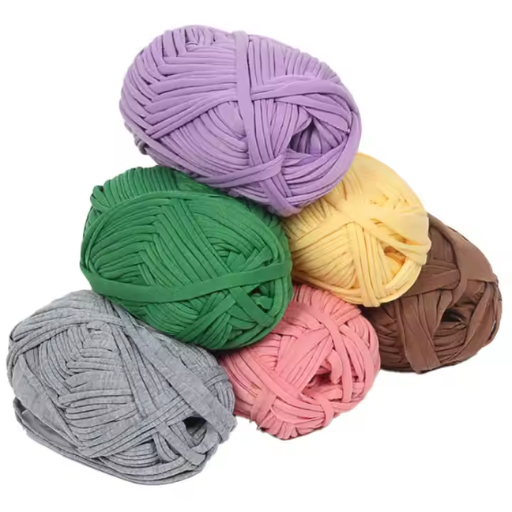
In having profiles of use that comfort elastic woven fabrics, special attention must be devoted to stretchability and comfort of the material. The most appropriate variants from the listed constrictions are:
- Wool-Blend Elastic Yarns – These offer a mositure wicking fur blend wool that is soft and comfortable against the skin as well as elastic strands and thus versatile enough for wearable pieces such as socks or gloves.
- Cotton with Elastic Core – Cotton elastic yarns shrinks to diminutive volumes giving able cores a chance to an elastic heart thus ideal for light summer clothes or accessories. the elastic ensures adaptability with no mineral disadvantage.
- Acrylic-Based Stretch Yarns – Acrylic stretch yarns become easier to obtain, versatile, and more reliable making the most significant category needed for framed wire works for he moderate stretch of elastic work needed fitted hats and some home decor items.
- Specialty Elastic Threads – For integrating stretch into existing designs, fine elastic threads can be worked with ordinary yarns to provide strength and flexibility without changing the primary texture.
So, as project requirements dictate, each one of these options offers distinct properties for particular uses.
Top Brands of Elastic Yarn to Consider
- Lion Brand Yarn – One of the most recognized brands for yarn supplies is Lion Brand has elastic yarns like “LB Collection Wool Stainless Steel.” This is an elastic yarn because of its blend containing stainless steel which allows structure yet makes it ideal for more lightweight crafting as well as fine textile work.
- DMC – A brand known and well trusted for thread and yarn, DMC offers options such as elastic threads which can be paired with a variety of other fibers. They are known best for embroidery yarns and other detailed works that require a degree of flexibility without looseness or distortion.
- Cascade Yarns – Known for their creative yarn products, Cascade has included elastic yarns like “Fixation Yarn” which is made with cotton and elastic. These are favored for socks, summer clothing, and other soft but stretchy items as it offers pliability and a firm hold.
- Katia Yarns – Versatility is a key focus for Katia, who offers elastic yarn suitable for detailed work. Their lines often contain yarns made for casuals, stylish knitwear, or other accessories whichid require multi-directional stretch.
- Premier Yarns – In the economic segment, Premier sells elastic yarns like “Wool-Free Sock Yarn.” These yarns are made with the best stretch and comfort which makes them ideal for use in socks and gloves.
These brands pay attention to the quality and the composition of the materials, making sure that builders and designers have dependable materials for different project requirements.
Choosing the Right Yarn Weight for Your Project
Choosing the correct yarn weight is important in the success, quality, and aesthetics of your project. Twice as important it helps you get a vivid idea of the stunning appeal a game piece will have, and putting all those components together, get the final result fabric that will perform exceptionally well. Yarn weights are divided into eight core types from fine Lace (0) to the ultra-thick Jumbo (7). For lace shawls and elaborate doilies, projects of daintier nature, Light and Super Fine (1) yarns are most useful because of their needed finesse in addition to how well they drape and flow. Bulky (5), Super Bulky (6), and other similar weights are excellent for softer but warmer blankets, durable rugs, or winter garments because they offer more robust structure.
Each crafting application comes with its fair share challenges while maintaining a proper needle or hook size. The right hook or needle size in proportion to the yarn weight is essential for a good stitch definition alongside proper tension. Take a worsted yarn (4) for example, it pairs best with 4.5 to 5.5mm knitting needles or equivalent crochet hooks making handling effortless. Some yarn weights can be more suited for different skill levels; for instance, Medium (4) and Light (3) are better for beginners due to their manageable thickness and balance.
Following a pattern’s suggested yarn weight along with it’s gauge, if offered, must be cross-referenced when planning any project. This step allows for the proper size and finishing accuracy to be achieved. Such precision reduces mistakes and enhances quality.
How to Use Elastic Yarn for Different Knitting Projects?
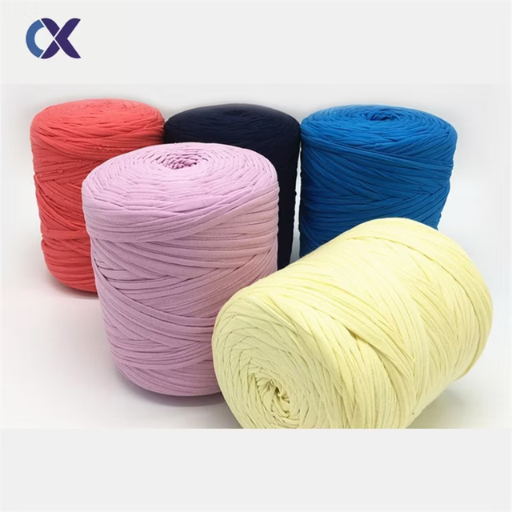
Elastic yarn is perfect for stretchable items such as socks, hats, and other fitted clothing because of the need to stretch and recover. In order to use elastic yarn to its full potential:
- Pattern Choice: Pick patterns where elastic yarn will be used, or ones that are fitted and make use of elastic yarn like rib patterns.
- Tension Control: Consistent tension for the stitch is important when knitting because elastic yarn can spring back when not in use.
- Needle Size: Needles that have been recommended for the elastic yarn being used should be utilized as they provide the necessary stretch and fit to the garment.
- Bind-Off Method: Use elastic bind-off methods that allow edge borders to remain unconfined and flexible yet still restrain the edges of the garment.
Following the above recommendations will yield the best results when combined with elastic yarn and enhance different knitting projects.
Innovative Knitting and Crochet Techniques Using Elastic Yarn
One way of working with elastic yarn can include spinning it together with conventional yarns like wool, cotton, and acrylics in your projects. For one, this technique improves the garment’s overall ease of use for the wearer for any type of active engagement while keeping the slated intimate materials cozy to wear. For instance, if you use elastic yarn with wool for sock knitting, it helps to better conform to different foot shapes over time and loseness in socks will be minimized. The same goes for cotton used in summer clothes: it helps with construction so it aids in stretch, making the fabric more dependable and easier to wear along with augmenting standards for lightweight clothes.
Elastic yarn works well when highlighting textured patterns and raised designs such as cables, bobbles, or ribbing. Its unique stretch makes it possible for these textures to retain their shape even after constant use or multiple washes. For those who love crocheting, the use of elastic yarn in 3D forms such as flower appliques or basketweave motifs offers better drape and regain without compromising the detail of the stitches.
Combining Elastic Yarn with Other Fibers
Adding elastic yarn to other fibers makes their combination Stretchy enough without compromising the structure. Blending elastic yarn and cotton yields a breathable and durable fabric that is flexible and resilient enough to be used in socks, activewear, and fitted tops. Furthermore, adjuncts of acrylic or polyester with elastic yarn will also enhance the lightweight nature of these fibers which would improve the comfort of the finished product. Cold-weather apparel is especially enhanced by wool blends with elastic yarn. These blends take advantage of wool’s natural insulation while also leveraging the elasticity needed for shape retention. The proportionate blend of elastic yarn with these fibers greatly impacts the hand, strength, and wearability of the fabric. This emphasizes the need to carefully choose fiber blends appropriate for the intended purposes of the textile design.
What Are the Benefits of Using Stretchy Yarn in Your Creations?

Stretchy yarn has many practical benefits such as:
- Shape Retention– Adornments and clothes made with stretchy yarn will hold their shape and not sag over time.
- Improved Comfort– With elasticity, a fabric can shift with a body, which enhances comfort when wearing it.
- Versatility – Its use can extend to widely different areas from fitted items such as socks and sweaters to flexible ones; toys, hats and gloves.
- Durability – With stretchy yarn, fabrics last long since wearing and washing do not damage them due to the elastic fibers.
Incorporating stretchy yarn into your design will surely give you a perfect mix of comfort and functionality specific to the needs of your project.
Enhanced Softness and Comfort in Finished Products
Adding elastic are very beneficial in improving the functionality and the finish of the product. Stranding techniques are done by combining soft materials like cotton and microfiber with elastic fibers to make softer fabrics. This is useful in clothing designed to be worn for long periods of time, since the elastic and soft components of stretchable fabrics help decrease irritation and facilitate movement. Studies show that more elastic fabrics retain softer qualities even after several washes, assuring comfort over time. These innovations satisfy consumer needs for products that most easily combine useful features and pleasing tactile feedback.
Durability and Longevity of Elastic Yarn Creations
Operating the fabric made with elastic yarns relies on the yarn’s capability to withstand repeated mechanical forces without structural damage. Spandex and elastane, two common elastic fibers, are designed with a very high stretch and recovery characteristics, which helps resist wearing of the garment during casual use. Studies have shown that fabrics with elastic yarns have up to 50% higher anti-deformation property than fabrics without elasticity.
Further, the development in polymer technologies have improved the effectiveness and toughness of elastic fibers to environmental adversities like UV light, moisture, and even chemical detergents. For example, some coated versions of elastic yarns now show lower rates of degradation, increase material lifespan and endure harsh washing conditions. This renders them particularly suitable for applications which require continuous elasticity, like activewear, undergarments, and medical textiles. With careful maintenance, innovation in material composition, and elastic yarn innovations, constituents are able to over time, provide a mixture of adaptability and reliability in meeting consumer expectations alongside practical demands.
How to Choose the Right Elastic Yarn for Your Needs?
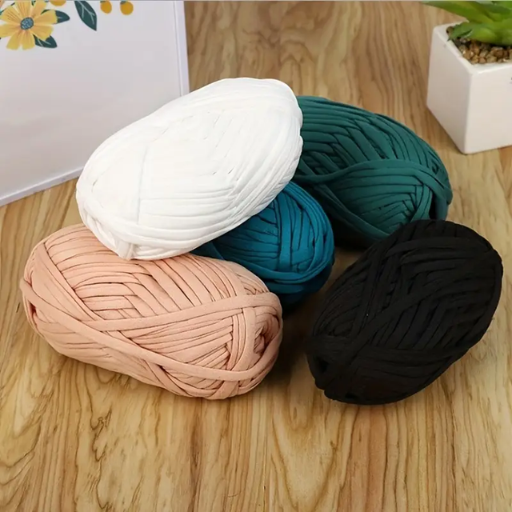
- Application Requirements
Outline the other properties that elastic yarn must possess in your example. Activewear requires high elasticity and durability, while medical use may need biocompatibility and hypoallergenic features.
- Stretch and Recovery
Assess the degree of stretching and recovering that the yarn has; most high-performance applications require superior recovery to ensure prolonged functionality.
- Material Composition
Look at the fiber blend used within the yarn. Blends of common materials like spandex, latex or rubber tend to vary in elasticity and resistance. Tailor the composition to the desired purpose.
- Durability
Evaluate the yarn’s resistance to frequent washing, UV exposure and abrasion. For long term use, choose these types of yarn known for strength retention under stress.
- Comfort and Aesthetics
Regardless of the intended outcome, make sure the yarn is comfortable against the skin, meets the requirements of appearance characteristics like smoothness, and has the desired texture.
Assessing those factors allows selection of the elastic yarn that best balances practical and performance criteria.
Tips for Selecting Cotton Yarn vs. Nylon or Acrylic Yarn
In the case of choosing between cotton, nylon, or acrylic yarns, it is important to analyze each one individually as well as all put together with a particular project in mind. The considerations for each type are outlined as follows:
- Cotton Yarn
- Material Composition: Lightweight and breathable, cotton yarn is ventilated which is a plus for warmer weather and ideal for breathable garments such as tanks.
- Durability: Cotton yarn is not very strong in its structure and its lack of elasticity will cause items to become shapeless over time especially for socks and mittens in heavy use.
- Texture and Comfort: Baby clothes needs to be soft on the skin and require cotton yarn which will not irritate sensitive skin.
- Maintenance: Cotton yarns are generally washable, however, they need to be washed carefully to avoid fading and damage from overexposure in a washing machine.
- Nylon Yarn
- Material Composition: Nylon is a synthetic polymer. Lightweight in structure, it is highly known for versatile use as well.
- Strength and Stretchability: For products like active wear, stretchable socks, or any other fitted garments, nylon yarn is best due to its great strength and stretchability.
- Moisture Resistance: These attributes also make it suitable for outdoor and water related activities since it does not absorb water and dries quickly.
- Durability: It also has a good tendency not to wear out easily thus providing long lasting products.
- Acrylic Yarn
- Material Composition: Because acrylic yarn is made from acrylic fibers, it is a fully synthetic option and is known to be very accessible economically.
- Affordability: For countless other projects, this feature provides an inexpensive alternative for acrylic yarn.
- Insulation Properties: The ability to retain heat makes it ideal for winter garments like hats, scarves, and blankets.
- Durability: Acrylic is resistant to moths, chemicals and mildew making projects durable over time but, can pill over time with heavy use.
Coordinating the properties of a material to suit the requirements of a project ensures success in functionality as well as in aesthetics in knitting while achieving the intended purpose.
Reference Sources
-
Functional Elastic Knits Made of Bamboo Charcoal and Quick-Dry Yarns: This study explored the use of bamboo charcoal and quick-dry yarns to create functional elastic knits using a crochet machine. The knits demonstrated improved air permeability (136%), water absorption (39%), and far-infrared emissivity (13%) compared to non-processed yarns. The optimal configuration involved bamboo charcoal-wrapped yarns with 20 twists per inch.
-
Dynamics of Elastic Knitted Fabrics for Sports Wear: This paper analyzed the dynamic elastic recovery (DER) of spandex-plated cotton fabrics compared to spandex core cotton spun fabrics. It found that spandex-plated fabrics exhibited superior DER, making them more suitable for sportswear applications.
-
Study of Elastic Warp Knitted Bands: This research focused on elastic warp-knitted bands used in medical textiles. By partially incorporating elastomeric threads, the study achieved a 20% reduction in fabric weight while maintaining sufficient stretch properties. The findings emphasized the importance of pre-elongation and weft yarn density in optimizing fabric performance.
Frequently Asked Questions (FAQs)
Q: What is elastic yarn, and how is it used in crochet and knitting?
A: Elastic yarn is a type of yarn that includes stretchy materials like spandex, allowing for greater elasticity in finished projects. It’s commonly used for making items that require a snug fit, such as garments, swimwear, and other elastic fabric items.
Q: Can I use elastic yarn for knitting socks?
A: Yes, elastic yarn is ideal for knitting socks because its stretchy nature helps the socks maintain their shape and fit snugly on the feet. Look for a knitting yarn that includes a blend of elastic fibers for the best results.
Q: What types of projects can I create with crochet yarn that has elasticity?
A: You can create a variety of projects with elastic crochet yarn, including garments, bags, blankets, and cushions. The elasticity allows for a comfortable fit and durability in items that stretch.
Q: How does the weight of yarn affect the final outcome of my crochet projects?
A: The weight of yarn impacts the drape, texture, and overall appearance of your project. For example, worsted weight yarn is versatile and works well for many projects, while lighter yarns are ideal for delicate items.
Q: What is cascade fixation, and how does it relate to elastic yarn?
A: Cascade fixation refers to a specific type of yarn blend that includes fixation properties, making it suitable for projects requiring elasticity. This yarn can be used in both crochet and knitting to create items that need to hold their shape.
Q: Is it advisable to use a crochet hook size different from the recommended size when working with soft yarn?
A: It is generally advisable to stick to the recommended hook size for soft yarn to ensure the correct tension and texture. However, experimenting with different hook sizes can produce interesting results, especially with stretchy yarns.
Q: How can I incorporate t-shirt yarn elastic fabric crochet into my DIY bag projects?
A: T-shirt yarn elastic fabric is perfect for DIY bag projects because it provides both strength and flexibility. You can use it to create structured bags that maintain their shape while still allowing for stretch and comfort during use.
Q: What are the benefits of using blend yarn for crochet and knit projects?
A: Blend yarn combines various fibers, such as wool and synthetic materials, offering the best of both worlds: warmth and durability. This type of yarn is especially beneficial for items that require elasticity and a soft feel, making it suitable for garments and home decor.








